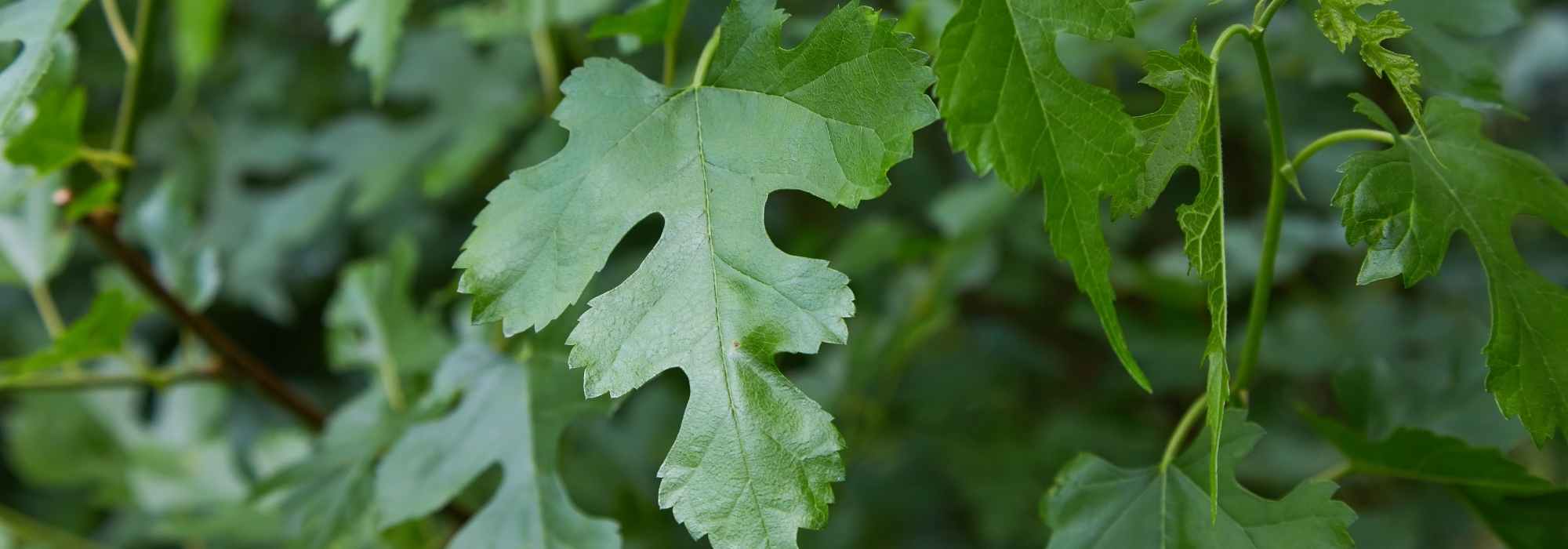
Unknown Maples
A selection of unusual Acers for medium-sized gardens
Contents
In the large and beautiful “family” of maples or Acer, there are the majestic large trees of European or American origin, Japanese maples (Acer palmatum), graceful ornamental bushes, essential in Japanese-inspired settings, bark maples, often Asian… and then there are others, less familiar to the general public and harder to find in garden centres: they feature, like their cousins, exceptional foliage, a magnificent autumn colouration, and unlike other maples, remain of intermediate size, allowing them to be installed in all gardens to introduce beautiful foliage and a structure of interest. All bloom discreetly in spring, with flowers that will turn into samaras.
Robust bushes that appreciate acidic soils and shaded to semi-shaded exposures, discover some of these lesser-known species with wonderful foliage.
→ Discover our full range of maples in our online nursery!
Acer japonicum 'Aconitifolium'
Also known as Japanese Maple with Aconite Leaves, this maple has many advantages: its deciduous leaves are astonishing, particularly intricate and cut right to their base, resembling the typical notches of Aconite, with fairly narrow lobes. While their shape is remarkable, their size is also of interest, as they measure no less than 10 cm in diameter (sometimes 15 cm), showcasing their colours first as acid green in spring, then light green, and finally beautifully reddened from early autumn: the Acer ‘Aconitfolium’ literally ignites, transitioning from orange-red to incandescent red… C‘est one of the most beautiful maples in its colour change!
The bush reaches 3 to 4 m at ripeness, with a greater spread of about 3.50 m. Its trunk remains short, offering a lovely well-spread silhouette over the years. Slow-growing, you can choose to grow it for several years in a pot on a shaded terrace.
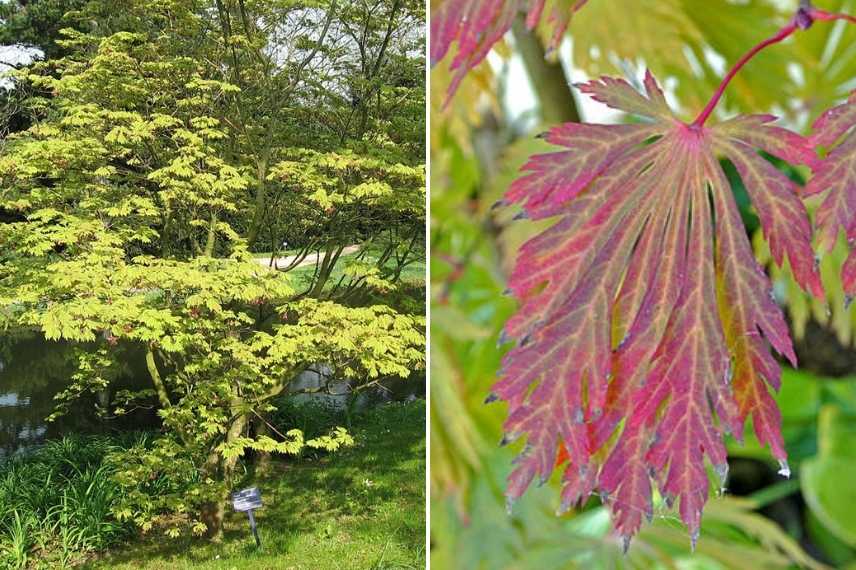
Acer japonicum ‘Aconitfolium’: habit and foliage in April (© Wikimedia Commons, Line 1), and foliage in October (© Wikimedia Commons-James Steakley)
Read also
6 remarkable MaplesAcer japonicum ‘Vitifolium’
The Acer japonicum ‘Vitifolium’ is also remarkable for its large, very fine and decorative foliage (10 to 15 cm, quite round). It is also known as the vine-leaved maple, as its deeply lobed and broad leaves resemble those of a vine, but are more rounded, like an extremely regular fan. It takes on stunning orange hues as autumn sets in, first on the margin, then colouring the entire leaf, eventually turning red, with these colours enhanced in a west-facing position, catching the evening light. It can bring a flamboyant colour to an acid soil bed, much like an Enkianthus. This maple tolerates sun and even drought. When mature, it reaches a height of between 5 and 7 m.
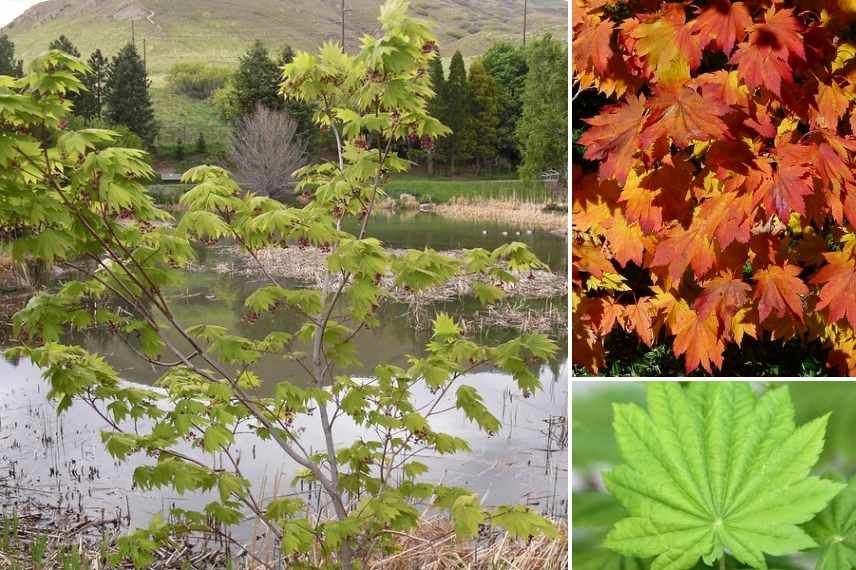
Acer japonicum ‘Vitifolium’ in spring (© Andrey Zharkikh), foliage in November top right (© Alvin Kho). The leaf in summer bottom right.
Discover other Acer - Maple tree
View all →Available in 6 sizes
Available in 1 sizes
Available in 1 sizes
Available in 1 sizes
Available in 1 sizes
Available in 3 sizes
Available in 4 sizes
Available in 3 sizes
Available in 2 sizes
Available in 1 sizes
Acer shirasawanum ‘Aureum’
If you are looking for beautiful, tender green foliage, Acer shirasawanum ‘Aureum’ (a Japanese maple) is the one for you! It unfurls its leaves in a particularly fresh and bright green in spring, then takes on yellow and golden hues in summer, earning it the nickname golden Japanese maple. This maple, still relatively rare in gardens, offers foliage that gradually transforms into stunning orange and red colours that set the garden ablaze before the first frosts. The leaves are perfectly lobed, with 7 to 11 dentate lobes, and are a lovely size. Like its counterparts, it produces small purplish-red flowers in spring. As is often the case with light foliage, this maple is sensitive to too much sunlight, so it should be placed in a sheltered position, in shade or partial shade, and protected from cold, dry winds. This beautiful maple remains small, reaching no more than 4 m in height, with a spread of about 3 m, and adopts a very ornamental silhouette as it matures.
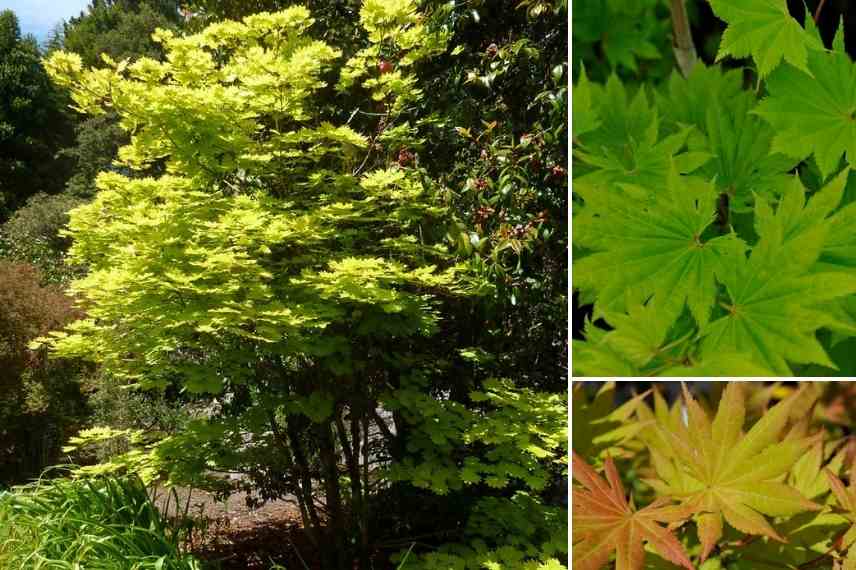
Acer shirasawanum ‘Aureum’: habit (© Wendy Cutler), foliage in June (© Megan Hansen), and below, autumn foliage of the cultivar ‘Autumn Moon’ (©Megan Hansen)
Acer sempervirens: the evergreen maple
No, you are not dreaming; there is a maple that does not lose its leaves, a little rarity in the genus Acer! This evergreen maple goes by several names (Acer creticum or Cretan maple, as well as Acer orientale, Acer humile, or Acer heterophyllum). The leaves of this maple, native to Crete and Turkey, are glossy and thick, polymorphous (they are not always identical, most often with 3 rounded lobes), somewhat resembling the leaves of the field maple. The young leaves have a slightly coppery hue, then turn a darker green. It forms a large bush or small tree, reaching 5 to 6 m in height, very dense. Its small flowers, appearing in April, are yellowish-green. Growing to a height of 5 m, it is ideally suited for shrub hedges, in groves, or even as a specimen plant. Thanks to its Mediterranean origins, the evergreen maple tolerates drought very well. You should plant it in a well-sunny area. It can sometimes be semi-evergreen in the coldest regions (it is hardy down to -12 °C).
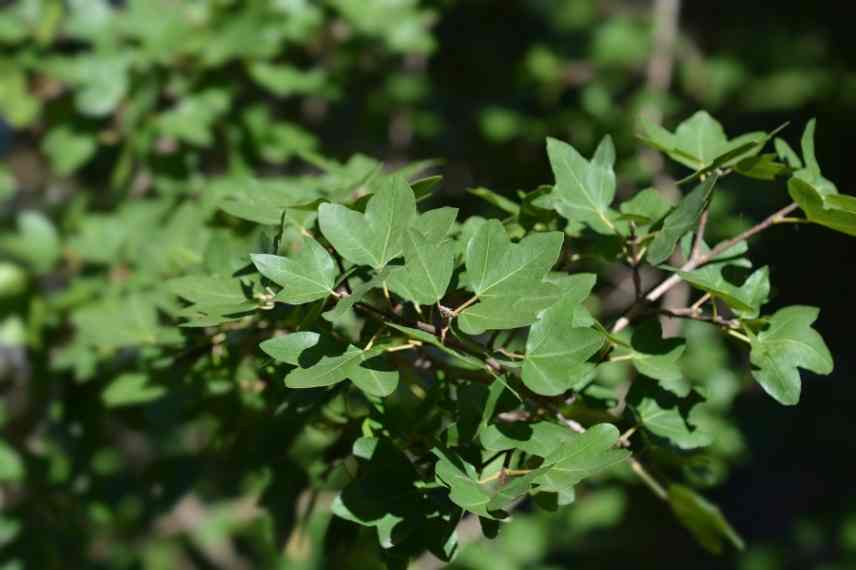
Acer sempervirens
Acer circinatum
Somewhat larger than the other maples in this selection, the Acer circinatum or vine-leaved maple grows up to 5 or 6 m, but in very good conditions, it can reach 8 m as it does in its natural American habitat. This maple, also known for its round leaves, is appealing due to its very spreading habit, which gives it a highly ornamental silhouette. Its leaves have 7 to 9 lobes, measuring 8 to 10 cm in diameter, and they turn yellow, orange, and red from late summer through autumn before falling. Slow-growing, the Acer circinatum, still marginal in our region, requires a cool, humus-bearing soil to thrive. Partial shade or full shade is beneficial for it. It resembles a Japanese maple, with the advantage of particularly well resisting heat.

Acer circinatum: habit and foliage in October (© Neil Bell), spring foliage top right, and early autumn foliage bottom right
Acer ginnala
With its spreading habit and exceptional scarlet palmate foliage in autumn, Acer ginnala is one of the most beautiful medium-sized maples. Native to Japan and China, this maple, also known as the Amur maple or Acer tataricum (the name Acer ginnala is actually an old designation), grows up to 6 m with a spread of about 3 m. Its foliage is trilobed, almost heart-shaped (but its vernacular name, Amur maple, comes from the river that flows through Siberia and China…), and its young shoots and petioles are tinged with red, providing a beautiful contrast against the tender green spring foliage. Its leaves display all colours in autumn: yellow, orange, and a vibrant bright red.
Acer ginnala thrives in well-drained, non-calcareous soil, and once established, it is also resistant to drought, severe cold, and heatwaves. Whether used in a free-standing hedge or as a specimen plant, it is stunning throughout the garden.
The variety ‘Bailey Compact’ allows this beautiful species to be planted in small gardens or pots, reaching a height of only 2.50 m.

Acer ginnala or Amur maple (© FD Richards)
→ Olivier presents more details about the Amur maple in his video!
- Subscribe!
- Contents
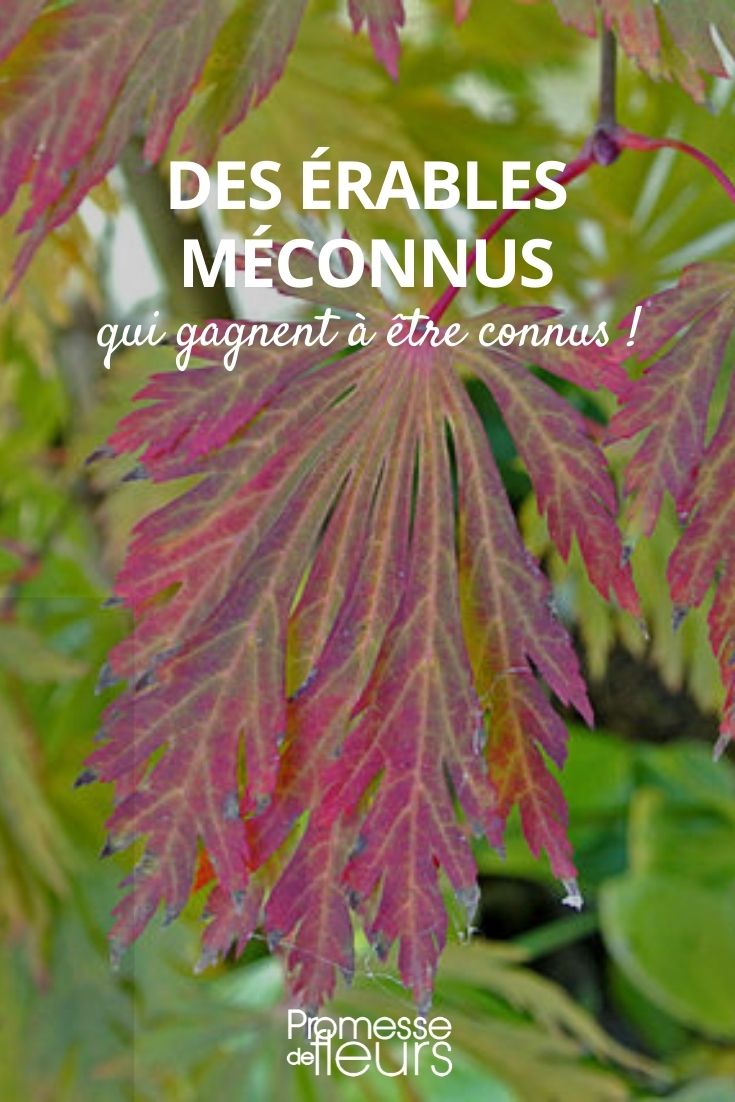
































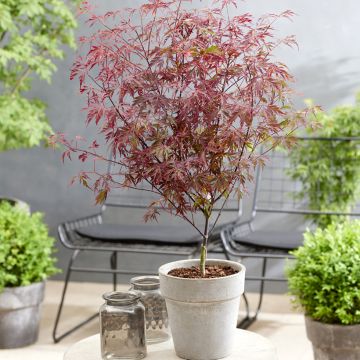
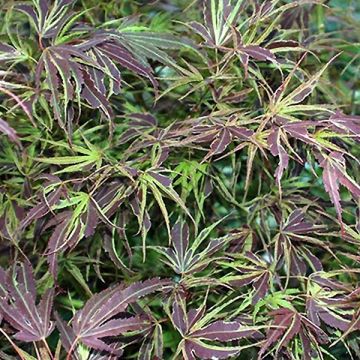
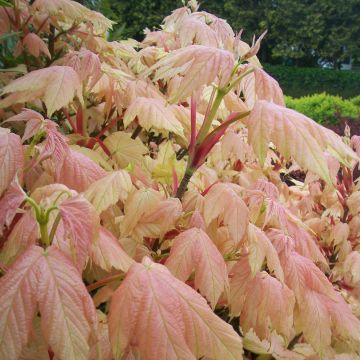
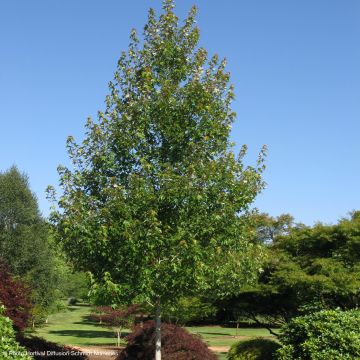
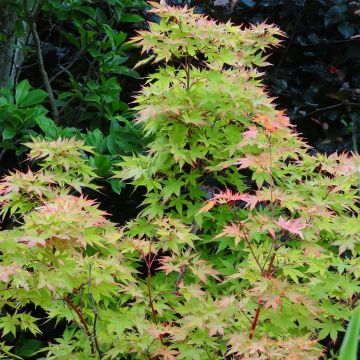

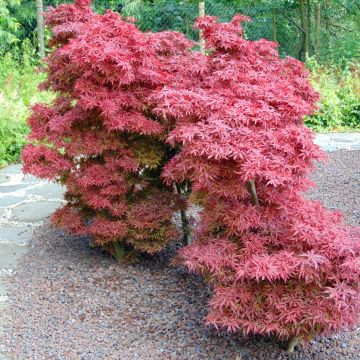
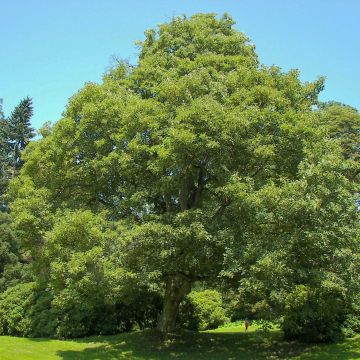
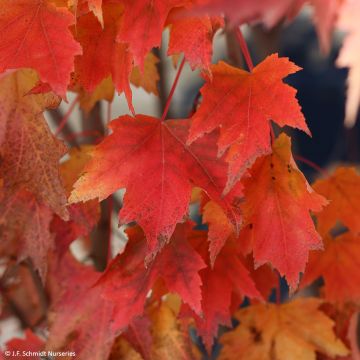
Comments